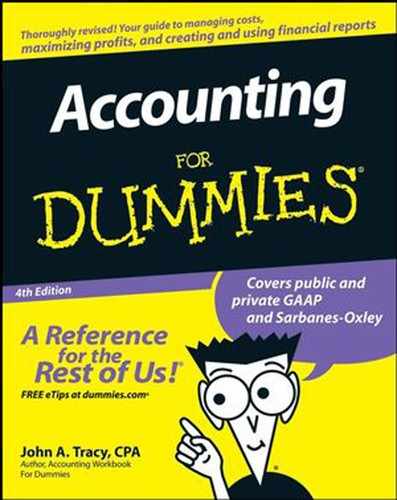2.2. How Profit and Cash Flow from Profit Differ
The income statement in Figure 2-1 reports that the business in our example earned $520,000 net income for the year. However, the statement of cash flows in Figure 2-3 reports that its profit-making, or operating, activities increased cash only $400,000 during the year. This gap between profit and cash flow from operating activities is not unusual. So, what happened to the other $120,000 of profit? Where is it? Is there some accounting sleight of hand going on? Did the business really earn $520,000 net income if cash increased only $400,000? These are good questions, and I will try to answer them as directly as I can without hitting you over the head with a lot of technical details at this point.
Here's one scenario that explains the $120,000 difference between profit (net income) and cash flow from operating activities:
Suppose the business collected $50,000 less cash from customers during the year than the total sales revenue reported in its income statement. (Remember that the business sells on credit and its customers take time before actually paying the business.) Therefore, there's a cash flow lag between booking sales and collecting cash from customers. As a result, the business's cash inflow from customers was $50,000 less than the sales revenue amount used to calculate profit for the year.
Also suppose that during the year the business made cash payments connected with its expenses that were $70,000 higher than the total amount of expenses reported in the income statement. For example, a business that sells products buys or makes the products, and then holds the products in inventory for some time before it sells the items to customers. Cash is paid out before the cost of goods sold expense is recorded. This is one example of a difference between cash flow connected with an expense and the amount recorded in the income statement for the expense.
In this scenario, the two factors cause cash flow from profit-making (operating) activities to be $120,000 less than the net income earned for the year. Cash collections from customers were $50,000 less than sales revenue, and cash payments for expenses were $70,000 more than the amount of expenses recorded to the year. In Chapter 6, I explain the several factors that cause cash flow and bottom-line profit to diverge.
|

